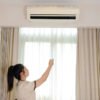Introduction to Confined Spaces:
Confined spaces are either fully or partially enclosed areas, which can pose specific hazards due to their limited entry and exit points, poor ventilation, and potential for hazardous substances or conditions.
These spaces can be found in various industries, including manufacturing plants, construction sites, storage tanks, tunnels, and silos. Confined spaces may include storage tanks, vaults, pipelines, sewers, boilers, or utility holes.
Understanding the risks associated with confined spaces is crucial, as accidents in these environments can lead to severe injuries, illnesses, or even fatalities. Hazards within confined spaces can include atmospheric dangers like lack of oxygen or the presence of toxic gases, physical hazards such as engulfment or entrapment, and biological risks.
A comprehensive understanding of the hazards, regulations, risk assessment, and control measures associated with confined spaces is essential to guarantee workers’ safety and well-being.
Legal and Regulatory Framework for Confined Space Hazards:
Confined space hazards are recognized and addressed through a range of legal and regulatory frameworks to ensure workers’ safety and prevent accidents. The specific regulations may vary by country or region, but here are some critical aspects of the legal and regulatory framework:
1. Occupational Safety and Health Administration (OSHA):
- In the United States, OSHA has established regulations specific to confined spaces under 29 CFR 1910.146.
- These regulations outline requirements for identifying permit-required confined spaces, developing entry procedures, and providing confined space training.
- OSHA also specifies the responsibilities of employers, including conducting hazard assessments, implementing controls, and providing necessary training and equipment.
2. European Union Directives:
- In the European Union, the EU Directive 92/57/EEC, also known as the Construction Sites Directive, addresses safety and health requirements for construction activities, including confined spaces.
- Work equipment use, including confined spaces, is subject to minimum safety and health requirements as established by the EU Directive 89/655/EEC.
3. National Standards and Codes of Practice:
- Many countries have national standards and codes of practice specific to confined spaces that complement or expand upon regulatory requirements.
- These standards provide additional guidance on risk assessment, control measures, atmospheric testing, emergency procedures, and rescue operations.
4. Permit-Required Confined Spaces:
- A common regulatory requirement is the identification and management of permit-required confined spaces.
- Permit systems are implemented to control access to confined spaces, ensuring that specific safety measures, such as atmospheric testing, ventilation, and rescue provisions, are in place before entry.
5. Employer and Employee Responsibilities:
- Legal frameworks typically assign responsibilities to both employers and employees to ensure compliance with confined space regulations.
- Employers are responsible for conducting hazard assessments, developing safe work procedures, providing appropriate training and personal protective equipment, and implementing controls to mitigate hazards.
- Employees are responsible for adhering to safe work practices, participating in training, and reporting any concerns or hazards to their employer.
How Do We Identify Potential Confined Space Hazards?
Identifying potential confined space hazards requires a systematic approach that involves thorough assessment and evaluation. Here are the steps to effectively identify potential confined space hazards:
- Gather Information: Obtain detailed information about the confined space, including its purpose, design, history, and any previous or near-miss incidents. Review relevant documentation, such as drawings, specifications, and operating procedures.
- Conduct a Site Visit: Visit the confined space in person to assess its physical characteristics, dimensions, access points, and potential hazards. Take note of any visible signs of risks, such as chemicals, stored materials, or environmental conditions.
- Identify Potential Hazards: Systematically evaluate the confined space to identify potential hazards that may be present. Consider the following hazard categories:
- Atmospheric Hazards: Assess for potential risks such as lack of oxygen, presence of toxic gases, or flammable/explosive atmospheres.
- Physical Hazards: Look for hazards related to the confined space structure, such as engulfment, entrapment, falls, or falling objects.
- Biological Hazards: Check for mould, bacteria, or other biological contaminants that could pose a health risk.
- Chemical Hazards: Identify any hazardous substances or materials stored or used in the confined space that could result in exposure or contamination.
- Consult Safety Data Sheets (SDS): Review SDS or other relevant documentation for substances or materials used within the confined space to understand their potential hazards, handling requirements, and exposure limits.
- Assess Environmental Factors: Consider environmental factors that may impact the confined space, such as temperature, humidity, noise levels, and lighting conditions. These factors can contribute to potential hazards or affect worker safety and well-being.
- Involve Subject Matter Experts: Seek input and guidance from experts, such as safety professionals, industrial hygienists, or engineers, to assist in hazard identification and evaluation.
- Document Findings: Record all identified hazards, their specific location within the confined space, and relevant details about their nature and potential risks.
- Prioritize and Evaluate Risks: Assess the severity and likelihood of each identified hazard and prioritize them based on the level of risk they pose. Consider the frequency of worker exposure, potential consequences, and existing control measures.
- Review Existing Control Measures: Evaluate the effectiveness of current control measures in place for mitigating identified hazards. Identify any gaps or deficiencies and recommend necessary improvements.
- Periodic Review: Regularly review and reassess confined space hazards to account for changes in work processes, equipment, materials, or conditions that may introduce new risks.
What are the Procedures and Measures to Avoid Confined Space Hazards?
- Permit System: Establish a permit system for entry into confined spaces. This system ensures proper procedures, controls, and precautions before allowing workers to enter the confined space. The permit should include detailed information on the identified hazards, required safety measures, and emergency procedures.
- Risk Assessment: Conduct a thorough risk assessment before entering a confined space. Identify and evaluate potential hazards and assess the level of risk associated with each threat. This assessment helps determine the necessary control measures and precautions to mitigate the identified risks.
3. Control Measures:
- Engineering Controls: Implement engineering controls to eliminate or minimize hazards. This may include providing adequate ventilation, ensuring proper lighting, and implementing safety features such as guardrails or barriers to prevent falls or entrapment.
- Administrative Controls: Develop and enforce administrative controls, such as implementing safe work procedures, conducting pre-entry briefings, and ensuring proper communication systems are in place. This includes establishing a transparent system for workers to report hazards or concerns.
- Personal Protective Equipment (PPE): Provide appropriate PPE to workers based on the identified hazards. This may include respiratory protection, fall protection equipment, protective clothing, and another necessary PPE.
4. Training and Competence:
- Ensure that workers and supervisors involved in confined space work receive comprehensive training on the hazards associated with confined spaces, proper procedures for entry and exit, and emergency response protocols.
- Provide training on using and maintaining personal protective equipment, equipment-specific training, and awareness of the signs and symptoms of exposure to hazardous substances.
- Atmospheric Monitoring: Conduct continuous atmospheric monitoring to assess oxygen levels, the presence of toxic gases, or flammable/explosive atmospheres. Use appropriate monitoring equipment, and establish clear protocols for interpreting monitoring results and taking necessary actions.
6. Communication and Emergency Procedures:
To ensure safety in confined spaces, establish reliable communication systems between workers inside and outside. Use radios, signalling devices, or other effective communication methods. Develop and practice emergency response procedures, including rescue plans, evacuation procedures, and proper use of rescue equipment. Ensure all workers know emergency procedures, how to report incidents and their role during emergencies.
7. Regular Inspections and Maintenance:
Conduct regular inspections and maintenance of confined spaces and related equipment. This includes inspecting ventilation systems, monitoring equipment, and personal protective equipment and ensuring the proper functioning of safety devices and emergency equipment.
8. Documentation and Record-Keeping:
Maintain detailed records of risk assessments, permits, training records, inspections, and incident reports related to confined space work. This documentation helps track compliance, identify trends, and support continuous improvement efforts.
What are the Trainings and Competence Requirements for Confined Space Hazards?
Training and competence requirements for confined space hazards are crucial to ensure that workers and supervisors possess the knowledge and skills to carry out work in confined spaces safely. Here are critical aspects of training and competence requirements:
- Confined Space Awareness Training: All workers who may enter or work around confined spaces should receive confined space risk assessment training. This training provides a general understanding of confined space hazards, the importance of following safety procedures, and the recognition of potential risks.
- Entry Supervisor Training: Supervisors overseeing confined space entry procedures should undergo specialized training. This training covers entry supervisors’ specific duties and responsibilities, including hazard identification, risk assessment, permit systems, emergency response protocols, and effective communication.
- Entry Team Training: Workers who enter confined spaces directly must receive comprehensive training on the specific hazards they may encounter. This training should include hazard recognition, proper use of personal protective equipment (PPE), atmospheric testing and monitoring, safe entry and exit procedures, emergency procedures, and rescue equipment.
- Rescue and Emergency Response Training: Workers involved in confined space entry should receive rescue and emergency response procedures training. This training covers techniques for rescuing workers from confined spaces, using appropriate rescue equipment, and understanding the procedures for summoning external rescue services.
- Competence Assessments: Regular assessments of workers’ competence should ensure they maintain the necessary skills and knowledge for working in confined spaces. Competence assessments may involve practical evaluations, written exams, or scenario-based assessments to validate understanding and application of confined space safety procedures.
- Refresher Training: Regular refresher training sessions should be conducted to reinforce knowledge and skills related to confined space hazards. Refresher training helps workers remain up-to-date with the latest safety procedures, equipment usage, and regulatory requirements.
Conclusion:
Confined spaces pose significant risks to workers and require proactive measures to ensure their safety. Understanding potential hazards, implementing risk assessment procedures, and adopting appropriate control measures are essential for a safe work environment.
Organizations can mitigate risks by following regulations, conducting thorough training, maintaining effective communication, and regularly monitoring and inspecting confined spaces.
Preventing accidents by prioritizing workers’ well-being and promoting a safety culture is of utmost importance. Consistent implementation of best practices can guarantee the safety of workers in confined spaces and contribute to a safer work environment.









